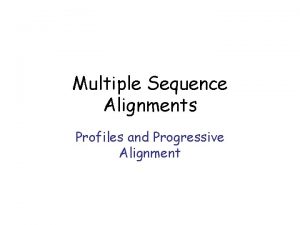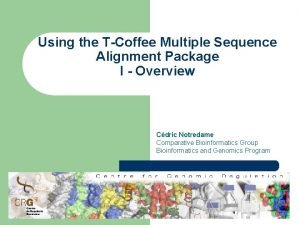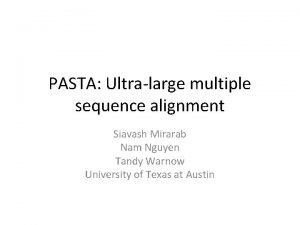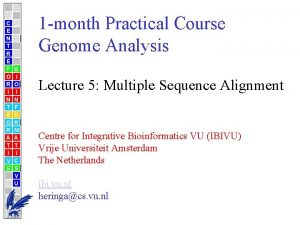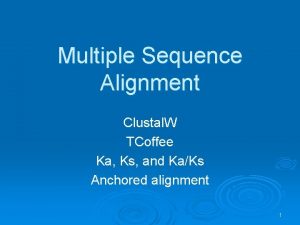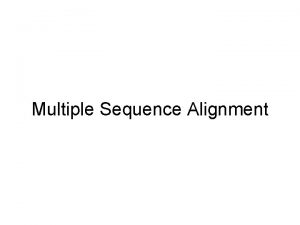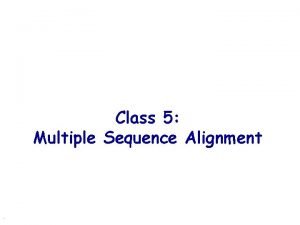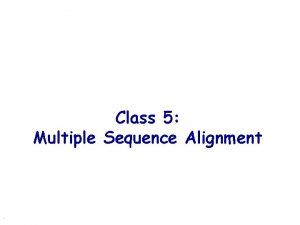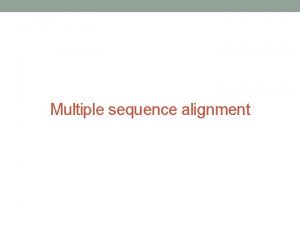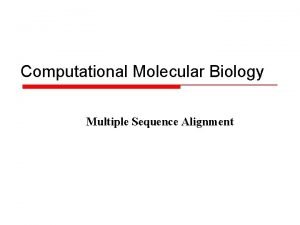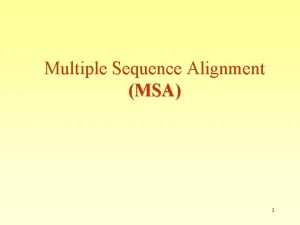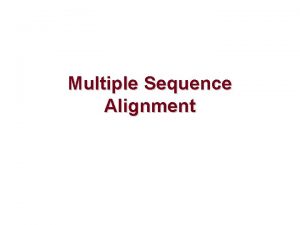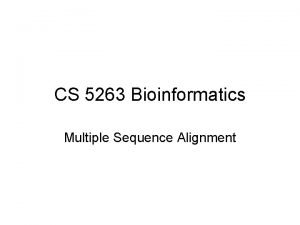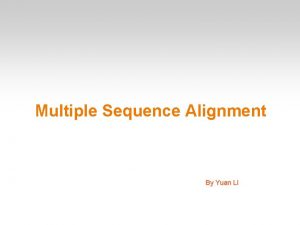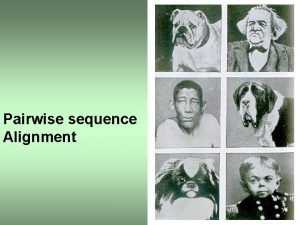Multiple Sequence Alignment An alignment of heads Sequence












- Slides: 12

Multiple Sequence Alignment

An alignment of heads

Sequence Alignment • A way of arranging the primary sequences of DNA, RNA and amino acid to identify the regions of similarity that may be a consequence of functional, structural or evolutionary relationship between the sequences.

Goals • To establish an hypothesis of positional homology between bases/amino acids. • To generate a concise, information-rich summary of sequence data. • Sometimes used to illustrate the dissimilarity between a group of sequences. • Alignments can be treated as models that can be used to test hypotheses.

Sequence Alignment • Aligned sequences of nucleotide or amino acid residues are typically represented as rows within a matrix. • Gaps (symbol “-”) are inserted between the residues so that residues with identical or similar characters are aligned. Taxon A GGGAATCTAGGACTATACCGGATCTA Taxon B GGGAATCTA--ACTATA--GGATCTA Taxon C GGG--TCTAGGACTATACCGGAT--A

Alignment can be easy or difficult Easy Difficult due to insertions or deletions (indels)


Protein Alignment may be guided by Tertiary Structure Interactions Escherichia coli Djl. A protein Homo sapiens Djl. A protein

Multiple Sequence Alignment. Approaches 3 main approaches of alignment: - Manual - Automatic - Combined

Manual Alignment Might be carried out because: - Alignment is easy. - There is some extraneous information (structural). - Automated alignment methods have encountered the local minimum problem. - An automated alignment method can be “improved”.

Automatic Alignment: Progressive Approach • Devised by Feng and Doolittle in 1987. • Essentially a heuristic method and as such is not guaranteed to find the ‘optimal’ alignment. • Requires n-1+n-2+n-3. . . n-n+1 pairwise alignments as a starting point. • Most successful implementation is CLUSTAL.

Overview of Clustal. W Procedure Hbb_Human Hbb_Horse Hba_Human Hba_Horse Myg_Whale 1 2 3 4 5 . 17. 59. 77 Clustal. W. 60. 59. 77 . 13. 75 Hbb_Human . 75 - 2 3 Quick pairwise alignment: calculate distance matrix 4 Hbb_Horse Hba_Human Neighbor-joining tree (guide tree) 1 Hba_Horse Myg_Whale alpha-helices 1 2 3 4 5 PEEKSAVTALWGKVN--VDEVGG GEEKAAVLALWDKVN--EEEVGG PADKTNVKAAWGKVGAHAGEYGA AADKTNVKAAWSKVGGHAGEYGA EHEWQLVLHVWAKVEADVAGHGQ 2 1 3 4 Progressive alignment following guide tree
 Progressive multiple sequence alignment
Progressive multiple sequence alignment Tcoffee alignment
Tcoffee alignment The sequence of statements inside a function definition
The sequence of statements inside a function definition Pasta multiple sequence alignment
Pasta multiple sequence alignment Praline multiple sequence alignment
Praline multiple sequence alignment Emboss clustal omega
Emboss clustal omega Compare two sequences
Compare two sequences Global vs local alignment
Global vs local alignment Pam1250
Pam1250 Sequence alignment
Sequence alignment Actcg
Actcg Multiple baseline vs multiple probe design
Multiple baseline vs multiple probe design Example of mimd
Example of mimd
